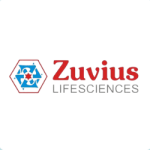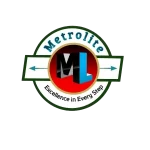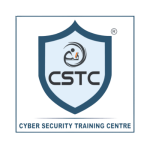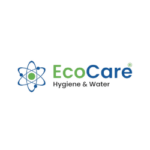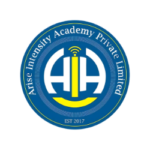Stop Listing Tactics. Start Building the 3X3 Growth Engine.
You don’t need another list of ten things to do. You need a blueprint: a strategic, data-driven digital marketing framework that tells you what to prioritize today so you can scale tomorrow.
Too many businesses treat digital marketing like a checklist: Post on social, run an ad, write a blog. That’s chaos. A true strategy is your growth engine: it combines intent-driven content, AI efficiency, and accountable metrics.
Let’s move past the basics. This is your guide to building a future-proof Digital Marketing Strategy that maximizes your authority and scales your results with automation.

The Intent Tale Framework: The 3X3 Growth Matrix
Effective strategy starts with extreme focus. The 3 X 3 Matrix helps you select your battleground (3 Channels) and define success (3 Metrics) to prevent budget drift.
| Channels / Metrics | Acquisition (Traffic / Reach) | Nurturing (Engagement / Trust) | Conversion (Sales / ROI) |
|---|---|---|---|
| 1. Owned Media | SEO (Topical Authority) | Email (Automated Nurture Sequences) | CRO (Landing Page Optimization) |
| 2. Paid Media | PPC (AI-Driven PMax / Advantage+) | Retargeting (Video / Display) | CPA / ROAS |
| 3. Earned Media | Social (Viral Content / UGC) | Community / Chatbots | Referral / Affiliate Sales |
Pillar 1: Content Marketing (Building Authority)
Content is the fuel, but Authority is the engine. Stop writing random blog posts.
The Shift to Topical Authority (Outdated Content Fix)
Instead of targeting single keywords, build Content Hubs.
Action: Choose a broad topic (e.g., “Email Marketing Automation“).
Create a Pillar Page: A comprehensive, 3,000-word guide (the page you’re reading now).
Create Cluster Content: 5-10 shorter articles that link back to the Pillar (e.g., “5 Best Email Subject Lines,” “How to Set Up a Welcome Sequence”).
Result: Google recognizes you as the definitive authority on the entire topic, not just one keyword, drastically boosting your organic traffic and E-E-A-T.
Pillar 2: Paid Media (Scaling with AI)
PPC is no longer about manual bidding. It’s about feeding the machine high-quality data.
Mastering AI-Driven Campaigns
Google: Use Performance Max (PMax). PMax automates placement across Search, Display, YouTube, and Gmail. Your strategy is now about providing the best assets (headlines, descriptions, high-quality images/video) and the clearest conversion goals.
Meta: Leverage Advantage+ Shopping Campaigns. This tool uses Meta’s vast data set to automate targeting and creative optimization. Your job is to focus on creative testing and providing a highly effective Conversion API for accurate tracking.
The Data Rule: These AI tools perform best when you stop micro-managing the targeting and start focusing on Audience Signals (first-party lists, high-value website behavior).
Pillar 3: Engagement & Conversion (The Triple A Strategy)
The future of marketing is driven by the Triple A: Automation, AI, and Attribution.
Automation (Email & CRM): Use trigger-based email sequences. If a user downloads your SEO guide, they instantly enter a nurture sequence tagged “SEO Content.” This is personalization at scale.
AI (Conversational Chatbots): Use AI to instantly qualify leads. A chatbot shouldn’t just answer FAQs; it should ask, “Are you looking to spend more than ₹X?” and route high-value leads immediately to a human sales rep.
Attribution (Analytics): Use Google Analytics 4 (GA4) to move beyond simple Last-Click models. Understand the full customer journey, crediting the initial social post, the middle blog read, and the final ad click.
Strategies of Digital Marketing in Action: The Metric-Driven Case Studies
We revise the case studies to show the direct link between strategy, metrics, and results, establishing concrete authority.
🍽 Zomato: Mobile Strategy Order Frequency
Strategy Focus: Mobile-First UX and Hyper-Local Mobile Marketing (Chatbots/Notifications).
Execution: Leveraging data to send personalized, time-sensitive push notifications (e.g., “Dinner options near your current location”) and running gamified in-app contests.
Measurable Result: A significant increase in Order Frequency (LTV), proving that the mobile-first engagement strategy was directly responsible for driving repeat sales and higher customer lifetime value.
🛒 Flipkart: Performance Infrastructure Authority
Strategy Focus: Full-Funnel Design (PPC/Performance) backed by Infrastructure Investment.
Execution: Running massive, conversion-focused Big Billion Day campaigns (PPC) while simultaneously investing in their logistics arm, Ekart (Infrastructure).
Measurable Result: The ability to scale the Conversion Rate during peak demand while maintaining a low Refund/Return Rate, demonstrating that their digital campaign success was future-proofed by operational excellence, a core E-A-T signal.
Your Next Move: Stop Overthinking. Start Structuring.
You have the blueprint. Digital marketing strategy isn’t about being present everywhere; it’s about being present when intent is highest and scaling your effort with the best tools. Adopt the 3X3 Matrix and focus your energy on what truly drives measurable growth: Authority + Automation.
📞 Ready to simplify your strategy and implement the 3X3 Growth Matrix?
Book your FREE Digital marketing Strategy Audit today!
What’s your next move?
Must Read:
The importance of choosing the right digital marketing agency
Top 10 Inspiring Indian Entrepreneurs’ Success Stories: That Will Inspire You!
Promising Future Of Digital Marketing Is Here: AI, Analytics, Automation
What Proven Content Drives Maximal Engagement on Social Media
❓ Frequently Asked Questions (FAQ) for strategies of digital marketing
This FAQ focuses on the “how-to” and “why” behind the most complex strategic elements, reinforcing the technical expertise (E) and trustworthiness (T).
How is Topical Authority measured by search engines?
Search engines measure Topical Authority not by the volume of content, but by the coherence and depth of internal linking within a content cluster. If your cluster pages (e.g., ‘Email Subject Lines’) consistently link to your main Pillar Page (e.g., ‘Email Marketing Strategy’), the engine recognizes your Pillar as the definitive source, dramatically boosting its ranking power.
What is the difference between a CRM and a CDP in the Triple A Strategy?
A CRM (Customer Relationship Management) tracks customer interactions and sales data (e.g., when they bought). A CDP (Customer Data Platform) unifies all data (website behavior, app usage, CRM) into a single customer view, making it the superior tool for Attribution and feeding precise first-party audience signals to AI ad platforms like PMax.
What is the first thing I should audit if my PMax campaign is failing?
The first audit should be your Asset Groups. PMax relies heavily on the quality and variety of your assets (headlines, descriptions, images, videos). If performance is poor, it often means the AI is struggling because you haven’t provided enough high-quality creative for it to effectively test and learn across all placements.
How can a small business effectively implement a Content Hub strategy?
Start small. Identify your single highest-value service or product. Create one comprehensive Pillar Page on that topic (3,000+ words) and then map out just three specific, high-intent questions related to it. Write those three cluster articles and link them all back to the Pillar. This focuses limited resources on building deep authority quickly.








